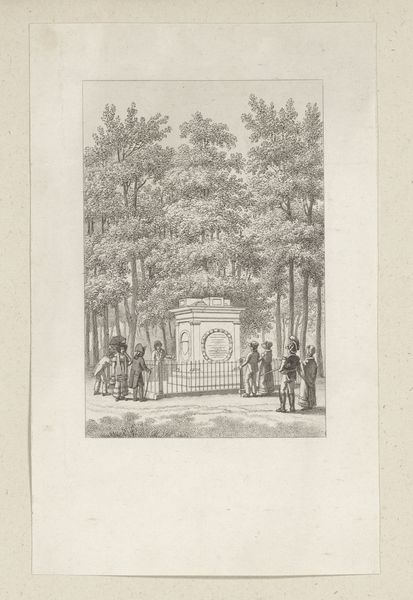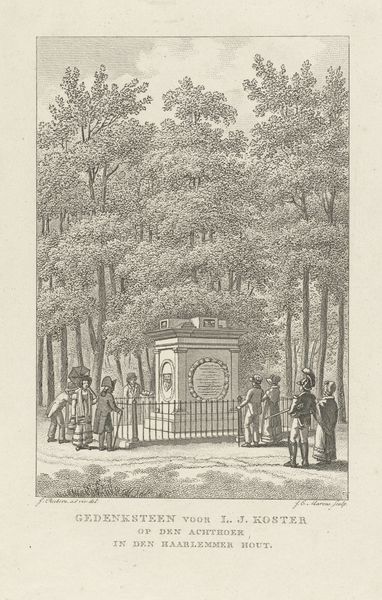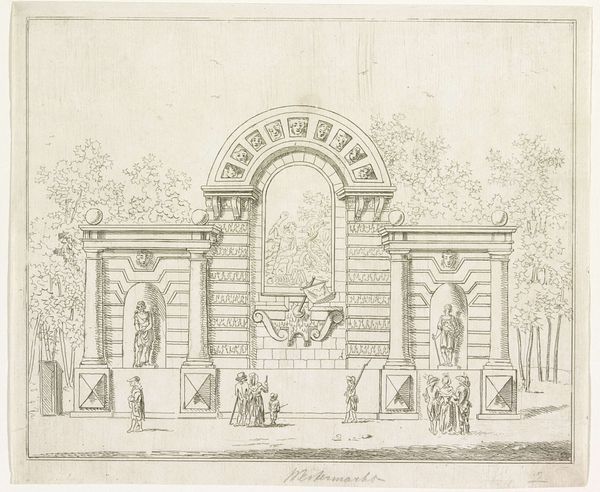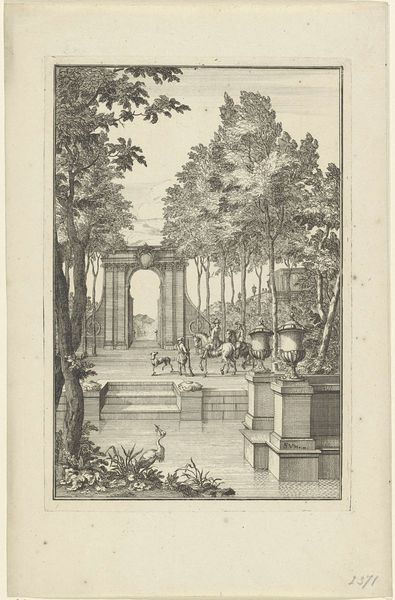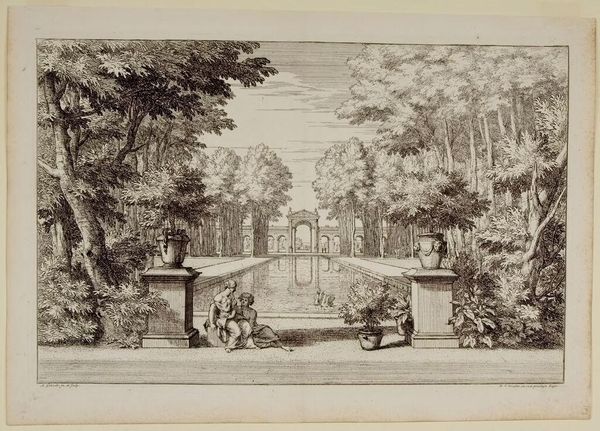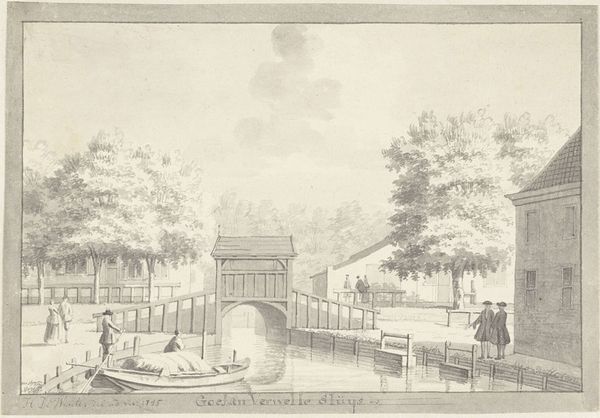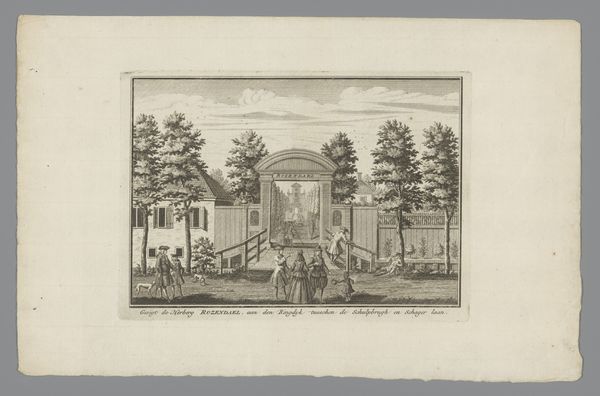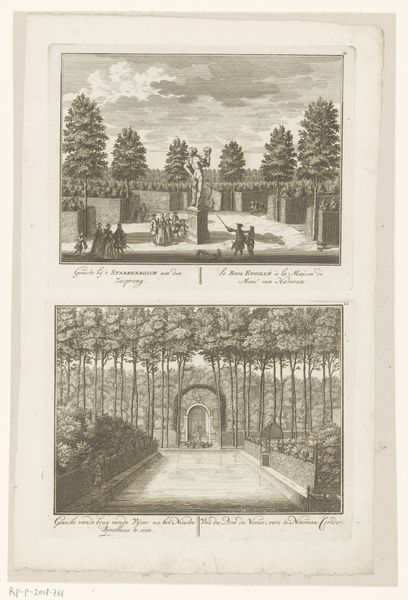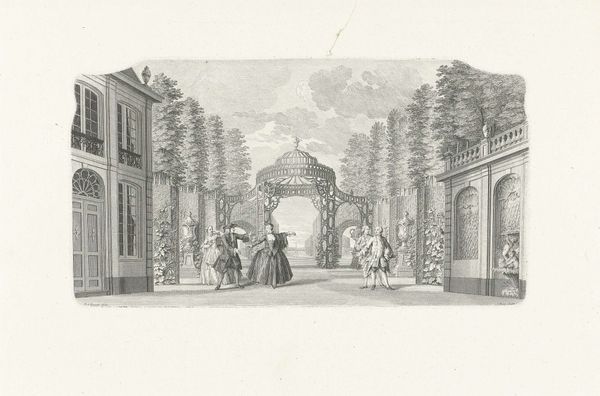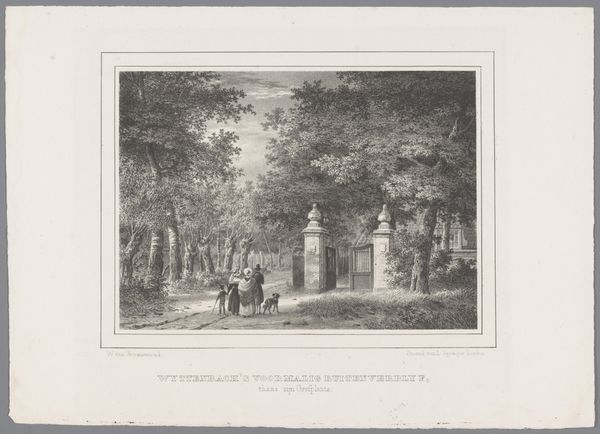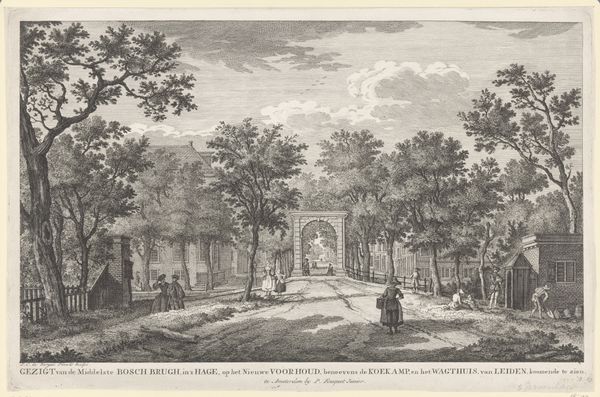
Gedenksteen voor Coster bij 400-jarig jubileum uitvinding boekdrukkunst, 1823 1824
0:00
0:00
jacobernstmarcus
Rijksmuseum
print, engraving
#
neoclacissism
#
statue
# print
#
old engraving style
#
landscape
#
figuration
#
cityscape
#
history-painting
#
engraving
Dimensions: height 236 mm, width 140 mm
Copyright: Rijks Museum: Open Domain
Curator: This engraving by Jacob Ernst Marcus commemorates the 400th anniversary of the invention of printing. It’s called “Gedenksteen voor Coster bij 400-jarig jubileum uitvinding boekdrukkunst, 1823,” so, "Memorial Stone for Coster at the 400th Anniversary of the Invention of Printing." Editor: It's quite stark. The dense trees behind the monument and the sparse rendering of the figures creates a somber, almost reverential mood. What strikes me is the depiction of labor in printmaking absent from this commemorative landscape. Curator: It absolutely engages with larger issues around commemoration and the construction of historical narratives. The figure of Coster, as the supposed inventor, raises questions of authenticity. But in relation to its socio-historical moment, the memorial could be viewed as an argument of Dutch cultural importance in the history of European technology and innovation. It asks us to consider who is remembered, how and why. Editor: Right, and by implication, who isn't. I see a memorial built of stone, presumably quarried and carved by workers whose labor is nowhere visible in this neat and tidy depiction. There's such a disconnect between the monument itself and the labor needed to make it, even before we get to the printing process! Curator: Exactly! This era saw massive social and political shifts across Europe, and this memorial served as a focal point to reinforce Dutch identity and cultural values. The focus on a single inventor obscures a wider understanding of labor practices during this transformative period, the material conditions of both the printing and monument industries. Editor: That’s interesting because this particular method, the engraving, as an artistic process relies heavily on reproduction and mass production—a point easily forgotten as it presents the stone structure with high aestheticization of its materiality. The labor involved in producing these prints for a wider audience is almost a hidden facet of its cultural message. Curator: True, seeing this memorial placed firmly within this idyllic landscape almost sanctifies Coster. What is striking is that within the frame of art historical context, monuments such as these had symbolic intention and the engraver, here, captured and perpetuated these ideological implications by choosing this perspective. Editor: A poignant image for our own times. I now read this piece as a prompt for understanding the hidden systems behind memorializing cultural icons. Curator: It indeed invites the critical view that commemorative cultural representation can, potentially, overshadow complex sociopolitical context.
Comments
No comments
Be the first to comment and join the conversation on the ultimate creative platform.
